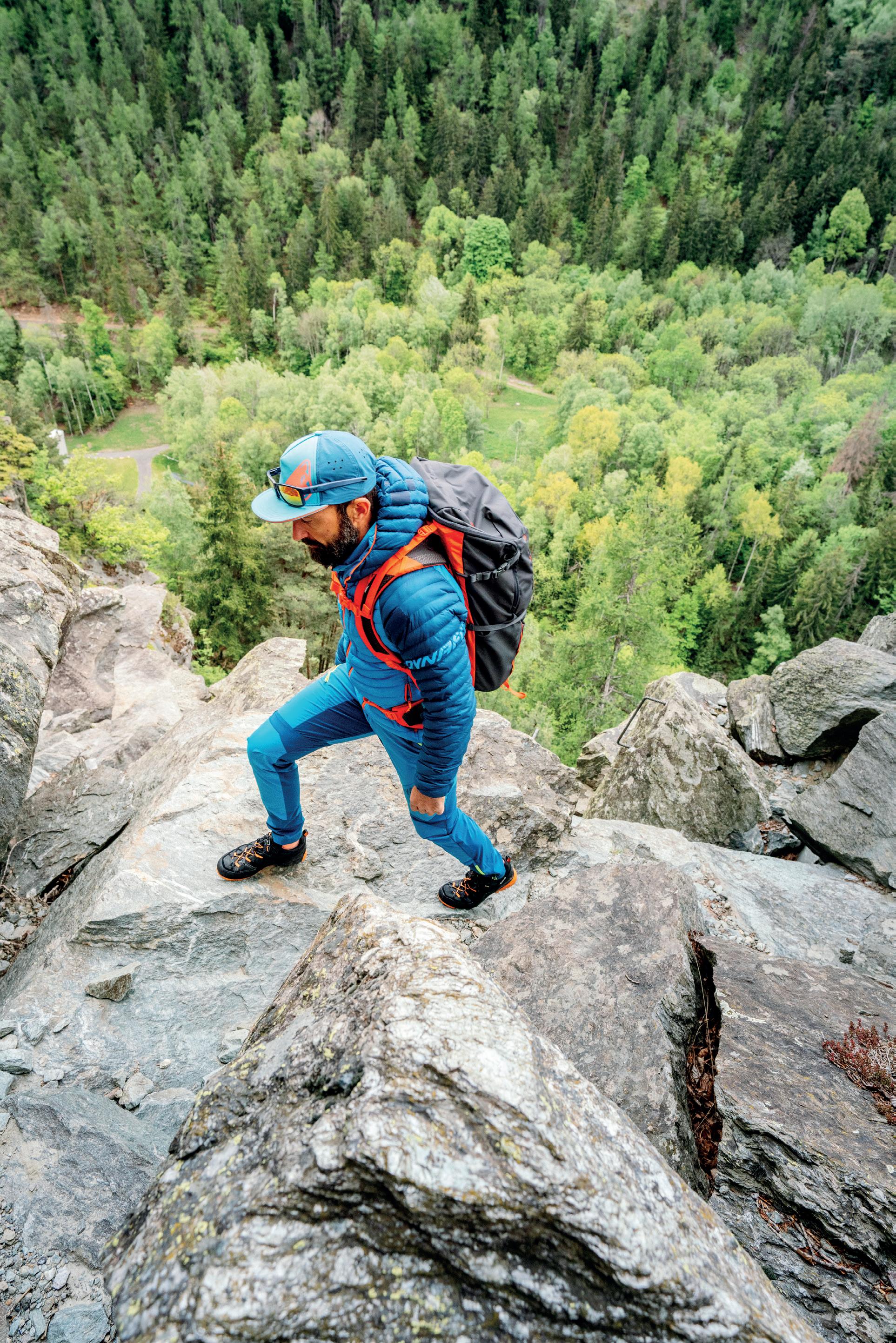
3 minute read
MICHELIN
MICHELIN: HOW DOES A SOLE COME TO LIFE?
The sole of the shoes is a fundamental element for any outdoor activity. But what is the development process that leads to the creation of these indispensable allies of all outdoor disciplines?
Phase 1 - Market needs and innovation
To help us understand the various steps that lead to the creation of a sole we had a talk with Trond Sonnergren, Director of Product and Innovation di JV International – soles by MICHELIN, who told us about the different production steps of the product design process. The fundamental starting point is to understand the needs of the market. Knowing in depth the needs of consumers allows to obtain important information that will feed ideas for new features and specifications of the final product. But it's not enough to just listen to end customers, you need to talk to retailers, designers and material developers all over the world to find out exactly what the market is looking for, often even anticipating their needs. From this point of view it is extremely important to work with a team of professionals who are passionate about the product they are going to outline. "New and existing relationships are the key to innovation" says Trond. “In order to design a sole concept, we need a clear idea of construction. We exploit our bank of knowledge to create a shoe that’s a precise fit for purpose.”
Phase 2 - The creative design process
Once the requests and new needs of consumers have been defined, the design phase starts. First come the hand-made sketches and drawings that slowly begin to become more and more detailed and technical. At this point we move on to develop molds in aluminum or steel but also in different types of resins. Through continuous improvement, draft after draft, the sole begins to take shape. It is time to take into consideration the different features such as cushioning, flexibility, grip, etc., which will eventually lead to completely change the structure of the sole. Trond’s team works closely with the brands' product teams to understand the key function of the shoe. In fact, shoe and sole cannot be seen as independent elements, but as a single element that will define the final product and its function. In this phase the different materials that will make up the finished product are also taken into consideration and both the economic and functional aspects are evaluated as part of the development process. Once the sole is completely realized, it is time to test it.
Phase 3 - Test
“The sole is then rigorously tested” says Trond. It is important that the finished product follows specific performance standards, however the actual performance of a shoe cannot be measured by laboratory tests alone. Adhering to countless industry standards is only part of the process. “Field tests are just as important, indeed they are fundamental” he explains. The shoe is then literally put to the test and tested in the field by technicians, professionals and enthusiasts. One of the most important elements of a sole design that is also taken into account in these tests is the tread. The tread has the task of making us feel safe in our movements, which is why it plays an extremely important role when choosing a shoe.
Every shoe and every activity needs a specific tread design, which means that every technical sole has a special function.
“Take a hiking boot, for example, the heel can be used for braking when walking downhill” says Trond. “The arch on this type of shoe has to protect the foot and provide grip on large stones or slippery roots”. “While hiking and trail-running share similar terrain” he goes on, “the exercise is completely different, which changes the whole design of the shoe.”
Phase 0 - Inspiration
Let's take a step back and go back to the beginning of the design phases. Inspiration is what moves us towards the creation of a new and innovative product. But where does the inspiration for a new sole come from?
“We find inspiration everywhere” says Trond. “It is the purpose of the sole that give direction to our designers in the creation of a new sole. It is the "fit for use" that guides the design and leads the team to seek technical, innovative and out of the ordinary ideas in any area to be transferred directly to the design of the soles”. All these notions are then translated to adapt to the different purposes that the final product must have. Most soles are in fact designed specifically for their unique function as human movement is completely different and each product will ultimately have unique characteristics that will define its specific function.










